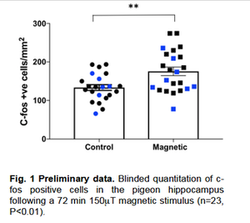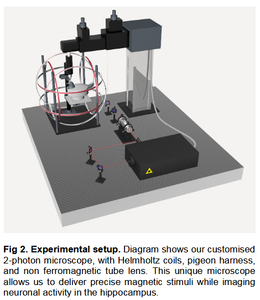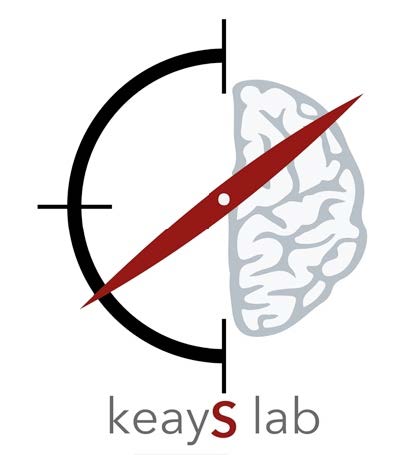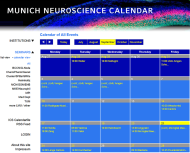How is magnetic information encoded in the pigeon brain?
PhD position the lab of Prof. David Keays (LMU, Munich)
21.12.2021
Background. Magnetoreception is the ability to sense the Earth’s magnetic field and use it for orientation and navigation. Behavioural experiments have shown that it is employed by many species; however, our understanding of how magnetic information is encoded within the central nervous system is limited. The Earth’s magnetic field is a vector with three components: (1) a polarity; (2) a intensity; and (3) an inclination. Analogous to the spatial encoding of information by place cells, head direction cells and grid cells in the rodent brain we predict the existence of “magnetic place cells” in the pigeon that encode for defined components of the Earth’s magnetic field.
Preliminary Data. We have undertaken a neuronal activation experiments in pigeons, employing C-fos as a surrogate marker for neuronal activity. We have shown that a rotating magnetic stimulus (3x Earth strength, 72mins) results in a significant upregulation of c-fos positive cells in the pigeon hippocampus (∼30%) (n=23, P<0.01) (Fig. 1).
Proposed experiments. Drawing on our preliminary data we will explore how neurons within the hippocampus encode magnetic information. To undertake these experiments we have built a customised 2-photon microscope. This set up allows the experimenter to deliver magnetic stimuli to head fixed pigeons with a customised double-wrapped coil system that is interfaced with the Matlab software that drives and acquires images from the microscope (Figure 2).  keays fig. 2To measure neuronal activity we will quantitate calcium influx employing a genetically encoded calcium indicator (GCaMP6), that will be delivered by an adeno-associated virus (AAV7). This method has already been established. The student will ask whether specific neurons encode for specific components of the magnetic field by delivering a magnetic stimulus with: (a) fixed polarity and inclination but varying intensity; (b) fixed inclination and intensity but with a changing polarity; and (c) constant polarity and intensity but a changing inclination. He/she we will analyze stimulus-response relationships of individual neurons using cross-correlation analysis and specifically explore whether there are spatially restricted neuronal ensembles. As the project advances we anticipate exploiting virtual reality paradigms to ascertain whether magnetically sensitive cells in the hippocampus integrate information from other senses, including vision. This will reveal there a magneto-visual representation of space in the pigeon hippocampus.
keays fig. 2To measure neuronal activity we will quantitate calcium influx employing a genetically encoded calcium indicator (GCaMP6), that will be delivered by an adeno-associated virus (AAV7). This method has already been established. The student will ask whether specific neurons encode for specific components of the magnetic field by delivering a magnetic stimulus with: (a) fixed polarity and inclination but varying intensity; (b) fixed inclination and intensity but with a changing polarity; and (c) constant polarity and intensity but a changing inclination. He/she we will analyze stimulus-response relationships of individual neurons using cross-correlation analysis and specifically explore whether there are spatially restricted neuronal ensembles. As the project advances we anticipate exploiting virtual reality paradigms to ascertain whether magnetically sensitive cells in the hippocampus integrate information from other senses, including vision. This will reveal there a magneto-visual representation of space in the pigeon hippocampus.
Methods: In vivo calcium imaging, magnetic stimulation, surgical procedures, histology, computational analysis.
Website: www.Keayslab.org







